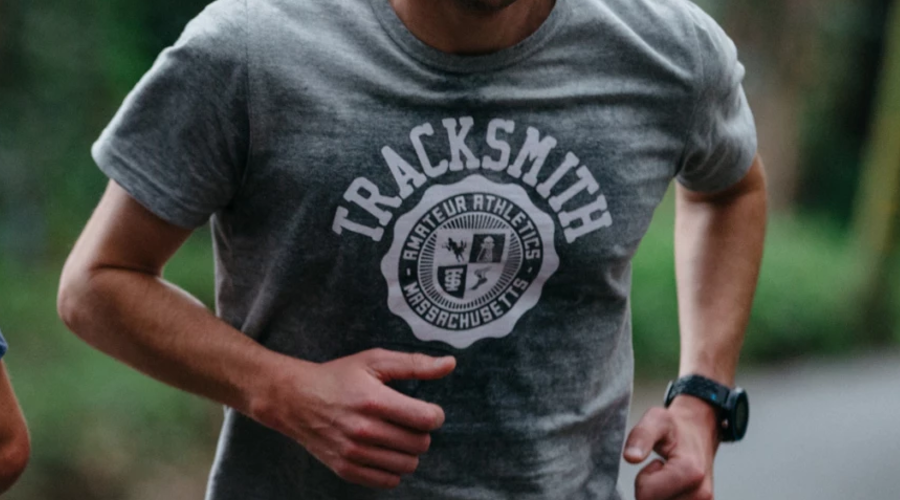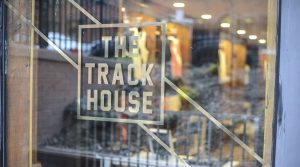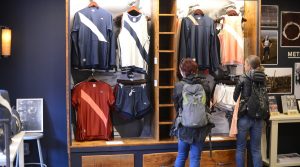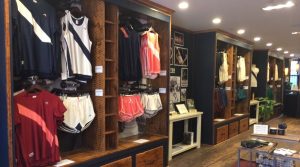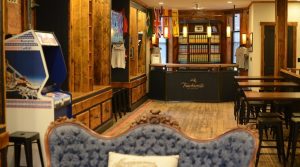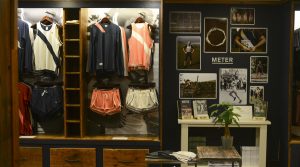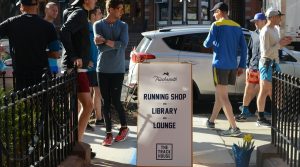Said the running apparel brand’s COO, “A direct brand like Tracksmith has the luxury of focusing solely on the needs of the competitive runner. We can make very exacting product but we can also have a much more personal relationship with our consumer.”
Writer: Tom Ryan
Last year, Brian Moore, an industry veteran with stops at The North Face, Timberland, Burton and Saucony, opted to join a start-up, Tracksmith.
Moore, who was previously VP of global footwear at The North Face and is a former VP of product marketing and design at Saucony, became Tracksmith’s COO and head of product. The Boston-based run apparel startup also over the last year hired Josh Rowe, a marketing executive whose tenure includes more than 15 years at Nike and New Balance, to lead marketing for the brand.
The appointments come as Tracksmith recently supplemented its purely e-commerce business model by opening five wholesale accounts: Brooklyn Running Company, Fleet Feet Chicago Old Town, Pacers Running in Washington, D.C. and Arlington, VA, Rogue Running Austin and San Francisco Running Company. At the same time, the company just opened its first permanent retail space, the Trackhouse, at 285 Newbury Street in Boston and plans to continue to pursue a direct-first approach.
Here, SGB talked to Moore about what attracted him to Tracksmith and about getting back into the run space.
SGB: Why did you join Tracksmith?
BM: Two reasons – one personal and professional. Personally I have always been a competitive runner, and still compete in master’s track and field. Even more so I have deep affection for the culture and history of the sport and really love the products – making performance running product is why I got into the industry in the first place. In a way it is a homecoming for me. But professionally I feel that the industry is at a crossroads. The traditional wholesale model is now under incredible pressure from vertical brands and online retailers. As a result, legacy brands are forced to focus on high volume, high margin products that will appeal to the broadest audience serviced by large chains. The result is “good-enough” product that has enough margin built in to make sure everyone gets paid but not necessarily the best possible product and service for the runner. A direct brand like Tracksmith has the luxury of focusing solely on the needs of the competitive runner. We can make very exacting product but we can also have a much more personal relationship with our consumer.
SGB: You’ve spent your career on the footwear side. What do you bring to apparel?
BM: In recent years my focus has primarily been strategic planning and merchandising and that has more to do with understanding the needs of the consumer than it does developing any one particular product. And when you can understand those needs the product creation process is actually very similar. It’s all about solving the same problems. First, how do we deliver the best fit, comfort and durability for a specific running function? But as importantly: what is going to motivate that runner from a cultural, emotional and aesthetic standpoint? That is really the focus. And at Tracksmith we don’t really view ourselves as an apparel company. We are a running company who wants to meet the needs of the competitive runner in all ways that they interact with the sport – products, not limited to apparel, but also experiences, events and media.
SGB: How are you finding apparel development process to be different than footwear?
BM: It is a less a difference between apparel and footwear than it is the difference between creating product directly for an end consumer versus trying to meet the needs of a large wholesale channel. We have the luxury of trying to understand the end use and emotional needs of the runner who will be using the things we make – and then to prioritize those needs in all aspects of the creation process. When building products to sell to large volume wholesale customers you need to start with the wholesale price target, back out a target cost based on margin needs and then align to a normally very conservative palette of colors and materials to ensure broad commerciality of the items you create. Then the design process requires extensive reviews with those accounts and their representatives. It is a process that works for the wholesaler and for their mass consumer but does not always result in making the best product for a very selective group of competitive runners.
SGB: Your experience lately has been around outdoor. Did you want to more focused on run?
BM: Running is in my DNA. I was a competitive runner in college and post collegiately for a few years – I still compete as a master with the Eliot Track Club. I actually started at New Balance managing their athletes and running promotions after working at a run specialty retailer. But it is true that I have spent much of my career in other industries. I left the running industry in 2001 to explore brands that I felt had deep cultural roots and excelled at creating a cult like status with their consumers – Burton Snowboards, Timberland, The North Face. While running had always been my passion and hobby my career became about learning how these brands create passionate loyalty and emotional ties with their communities. Now I just get to do that again with the community I came from.
SGB: Is the company tweaking its direct model with its move into wholesale accounts?
BM: We’re primarily focused on building our direct channels, especially our website and our Boston store, the Trackhouse. These strategic partnerships allow us to work with running specialty shops that exemplify our commitment to building and celebrating the running community. Wholesale is a channel we’re exploring in a very limited way, but the model will continue to focus on direct-to-consumer.
SGB: Why does direct work for Tracksmith?
BM: It used to be that brands were experts at making things and retailers were experts at finding consumer groups and establishing a relationship with them. As the retail landscape has evolved and with the economic need to drive growth, this intimate relationship between large retailer and consumer is difficult to maintain – particularly with small groups that have specific needs, like competitive runners. Also, with changes in communication, brands no longer need a third party to be their advocate to the consumer. We can access them directly through online and physical communities. As a result, the consumer can now have a very direct relationship with a brand. We can comment on and support their running through social media. They can experience the depth of our brand stories through catalogs, digital storytelling and in our store. The experience is far less transactional, and for a group like competitive runners, who value a shared understanding of the sport we love, this can be a strong point of differentiation.
SGB: Will Tracksmith be opening more locations?
BM: Since the brand launched, we’ve had pop-ups during the Boston Marathon that allowed us to test the brick-and-mortar waters. They were not only hugely successful from a sales perspective but they also brought us closer to our customer base. The insights and lessons we gleaned from them were incredibly powerful for us over the course of the year. These pop-ups also taught us the power of brick-and-mortar as yet another channel for building the brand experience. So when we made the decision to open in Boston, we knew it wasn’t just about setting up shop and calling it a day. We wanted to build an immersive space that really speaks to the heart and soul of running, the Trackhouse. The space we found on Newbury Street really allowed us to do this in a unique way, with two floors – one for retail and our second floor as our offices and lounge space. It’s really “direct-to-consumer” taken to the next level – we’re inviting runners into our brand home as it were, so now we can just pop downstairs to test ideas, hear feedback or just see what’s resonating. It’s a really unique opportunity, and not one that’s easily replicable, so for the time being this will be our only store.
SGB: Run specialty appears to be facing new challenges addressing the shift to digital retailing as well as millennials overall. What’s going on?
BM: Run specialty has always done the best job at educating consumers, engaging runners and growing participation. But I agree that the mindset of millennials is very different than generations that came before. They are far more comfortable doing their own research and are less reliant on retail experts to aid them in decision making. They are also far less likely to pay full price when they know where to find something online that is less expensive. This doesn’t make them cheap – they are just very savvy shoppers. Many also view exercise as an opportunity to be social and have an experience that is hard but fun. Groups like the November Project and movements like CrossFit incorporate running but in a very different setting than what most retailers think of when think “running.” Running clubs and traditional group runs that don’t “gamify” the activity are becoming less popular and community building efforts need to shift to embrace this new mindset. But I don’t believe that the problem is that less people are racing. There is plenty of business still to be done with the competitive runner. But what has driven growth over the past decade is the recreational runner and many in that group have now moved on to different forms of recreation and feel confident that they can find the products they need for those activities online.
Check out a slide show of Tracksmith’s new store below.
Photos courtesy Tracksmith

